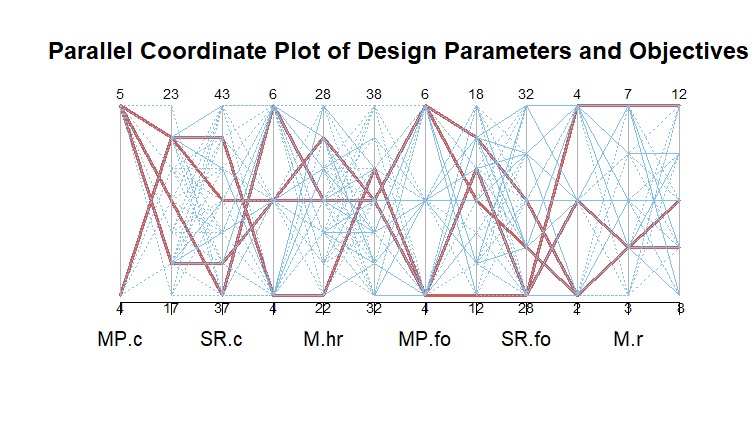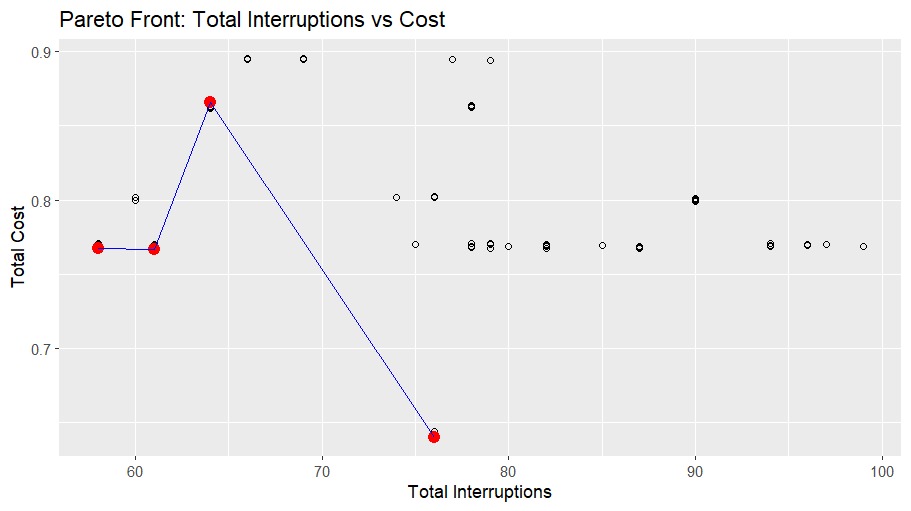Multi-Objective Optimization
Until now, we have identified multiple maintenance solutions for the integrated civil systems over their lifetimes. Our optimization process aims to minimize maintenance downtime while maximizing the operational efficiency of each system. By integrating various maintenance schedules across a 100-year lifecycle, we seek to enhance cost-effectiveness and ensure sustainability.
Through Life-Cycle Analysis (LCA), we evaluated critical factors, including energy consumption, greenhouse gas emissions (CO₂, SO₂, NOₓ), and maintenance interventions. These insights allow for a strategic alignment of interventions across different subsystems.
The core objective of this multi-objective optimization is to synchronize maintenance interventions across multiple structures, minimizing interruptions and optimizing resource allocation. By increasing the intervals between maintenance activities and reducing the total number and duration of interventions, we improve system longevity and sustainability.
A FITNESS FUNCTION was implemented to drive optimization, employing a genetic algorithm. This algorithm iterates over an initial dataset and applies a suitability function to generate and refine new datasets until an optimal solution is identified. The input parameters include a predefined range of intervention periods for each component, influencing the fitness function’s calculations.
System Dependencies and Maintenance Impact
| System | Dependent System | Type of Dependency | Impact |
|---|---|---|---|
| Concrete Building | High-Rise Building | Structural integrity affects the stability of the high-rise design and façade attachments. | Structural cracks require retrofitting, delaying façade maintenance and raising lifecycle costs. |
| Concrete Building | Building Facilities | Embeds utility conduits like plumbing and electrical wiring. | Repairs can disrupt HVAC, water, or electrical systems, requiring re-scheduling of maintenance for all components. |
| High-Rise Building | Residential Building | Elevators, façade systems, and other high-rise features affect residential accessibility and comfort. | Elevator downtime increases inconvenience, while façade degradation impacts thermal comfort and energy costs for residents. |
| Building Facilities | Residential Building | Operational utilities like HVAC and plumbing directly impact livability. | Facility downtime leads to discomfort for residents and higher operational costs, impacting lifecycle analysis. |
| Residential Building | All Systems | Serves as the user environment integrating structure, facilities, and high-rise components. | Downtime in any system directly impacts residents’ quality of life and increases long-term lifecycle costs due to reduced operational efficiency. |
Graphical Optimization Analysis
To further refine the maintenance strategy, Pareto frontier plots were employed, showcasing the best alternative solutions. These solutions are evaluated based on:
- Minimization of lifecycle costs
- Reduction in environmental impact
- Optimization of intervention efficiency
Results from Optimized Scenarios
Each alternative is depicted with blue and red lines, where the optimized solutions are highlighted in red. Some solutions exhibit lower maintenance costs but higher energy consumption, while others reduce greenhouse gas emissions at a slightly higher cost. These trade-offs inform decision-making for stakeholders, allowing them to prioritize specific sustainability or cost-effectiveness goals.
Following are the results of the best-suited alternatives derived from the optimization process, which can be utilized for strategic decision-making and lifecycle planning.

